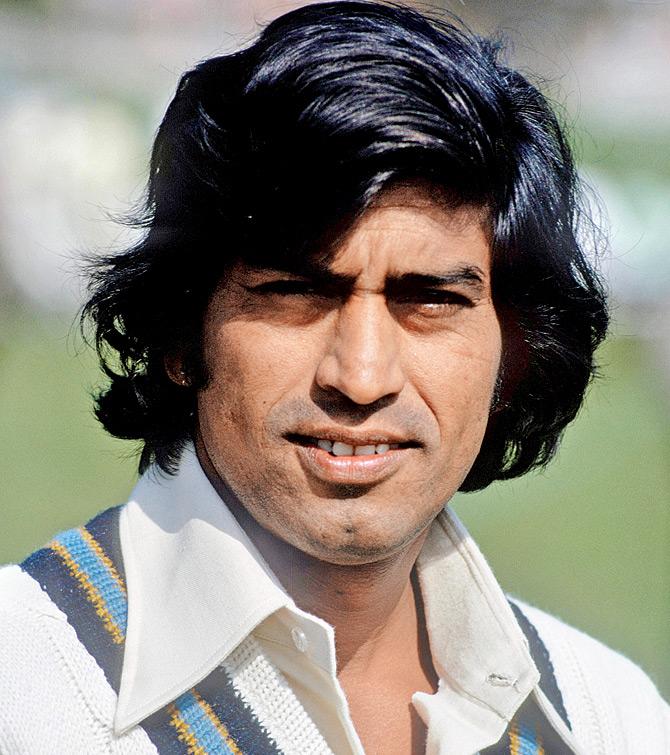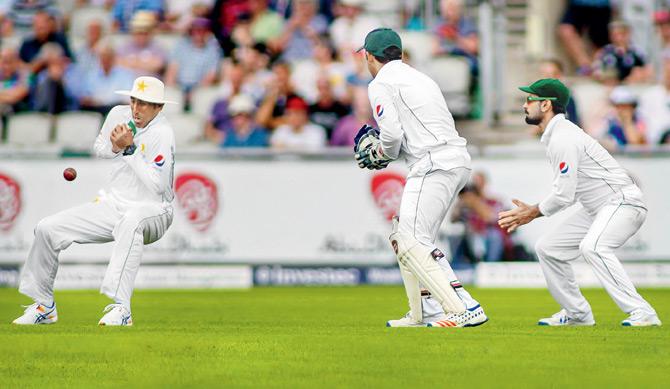The next time a commentator says fielding standards have greatly improved over the years, I’d like him or her to be more specific. Some of the out-fielding is spectacular in its athleticism, but the close catching is technically deficient, writes Ian Chappell

Pakistan���¢��������s Younis Khan drops England���¢��������s James Vince at slip on Day One of the second Test at Old Trafford in Manchester on Friday.
 The Lord’s Test was a timely reminder of a game that can be an enthralling contest when there’s something in the pitch for the bowlers and is enhanced by the magic of good wrist-spin.
The Lord’s Test was a timely reminder of a game that can be an enthralling contest when there’s something in the pitch for the bowlers and is enhanced by the magic of good wrist-spin.
While the bowling at times reached heights of excellence, the batting at Lord’s was often moderate and the catching appalling.
ADVERTISEMENT

Eknath Solkar in the early 1970s
The next time a commentator says fielding standards have greatly improved over the years I’d like him or her to be more specific.
Some of the out-fielding is spectacular in its athleticism and at times even displays ballet like qualities but the close catching is technically deficient.
 Pakistan’s Younis Khan drops England’s James Vince at slip on Day One of the second Test at Old Trafford in Manchester on Friday. Pic/Getty Images
Pakistan’s Younis Khan drops England’s James Vince at slip on Day One of the second Test at Old Trafford in Manchester on Friday. Pic/Getty Images
And it’s not just England and Pakistan who are at fault; it’s a world wide epidemic and in this case it’s not catching.
Most of the dropped catches behind the wicket are the result of one simple technical flaw; the failure to slightly turn the foot outwards to the side on which the ball is travelling before making the next move. Without this simple manoeuvre the fielder will be off-balance when attempting to complete a catch.
On most occasions when a catch goes down, the fieldsman either collapses sideways like a detonated building or takes a tumble backwards.
Technical flaw
Not to pick on Virat Kohli but he’s a high quality batsman with wonderful hand - eye coordination, which should make him a natural for the catching positions. However, Kohli’s failings in the slip cordon are the result of this technical flaw and also a lack of anticipation in the leg-slip position when the spinners are operating.
Anticipation is a big part of fielding at leg-slip to the spinners, because often the ball suddenly appears from behind a pad. Consequently, it’s crucial to follow the flight of the delivery and then focus on a spot from whence the ball will appear.
I watched in amazement as Garry Sobers — fielding at leg-slip for South Australia — calculated that a Victorian batsman was purely blocking the last over before lunch. Choosing his moment perfectly, he stepped forward, placed his hand on the ground and the ball was played straight into his hands. Sobers was one of the best in that position but he had an equal in India’s Eknath Solkar. Solkar was exceedingly brave in the short-leg position and would’ve made an excellent pickpocket; he stood so close without you feeling his presence.
What a pity Ekki isn’t around now, he’d be able to put Kohli and any other short-leg who cared to listen, straight on what’s required to excel in that position.
I often wonder what current players are being taught, particularly when it comes to batting and fielding. It’s understandable that coaching is a little confused with three variations of the game to satisfy but there are certain principles that should be adhered to in order to achieve success.
Some coaches put forward theories that are more about re-inventing the game than helping their charges. I’m all for improvement but change for the sake of it is usually mis-directed because the motives behind it are wrong.
Just because a technique is ancient doesn’t mean it’s inefficient. It has usually survived because it’s been tried and tested over many years and proved to be the best way to achieve success.
Grasp it early
Like most aspects of the game, these trusted techniques are best learned when the player is young; anywhere from eight to 18 years of age. The most knowledgeable coaches should be in charge of good young players and not international teams.
Cricket needs to closely examine its coaching structure. There have never been more coaches but while the game has improved in a number of areas, it’s technically deficient in some very important aspects.
Sobers wrote in his coaching book: “One of the greatest tragedies of cricket coaching is that the greatness of the game’s best players has been revered but never followed.”
Many young players have and will learn the game from watching it on television. Better they learn techniques that work rather than observe theories that are the result of some misguided coach’s ambition.
 Subscribe today by clicking the link and stay updated with the latest news!" Click here!
Subscribe today by clicking the link and stay updated with the latest news!" Click here!







